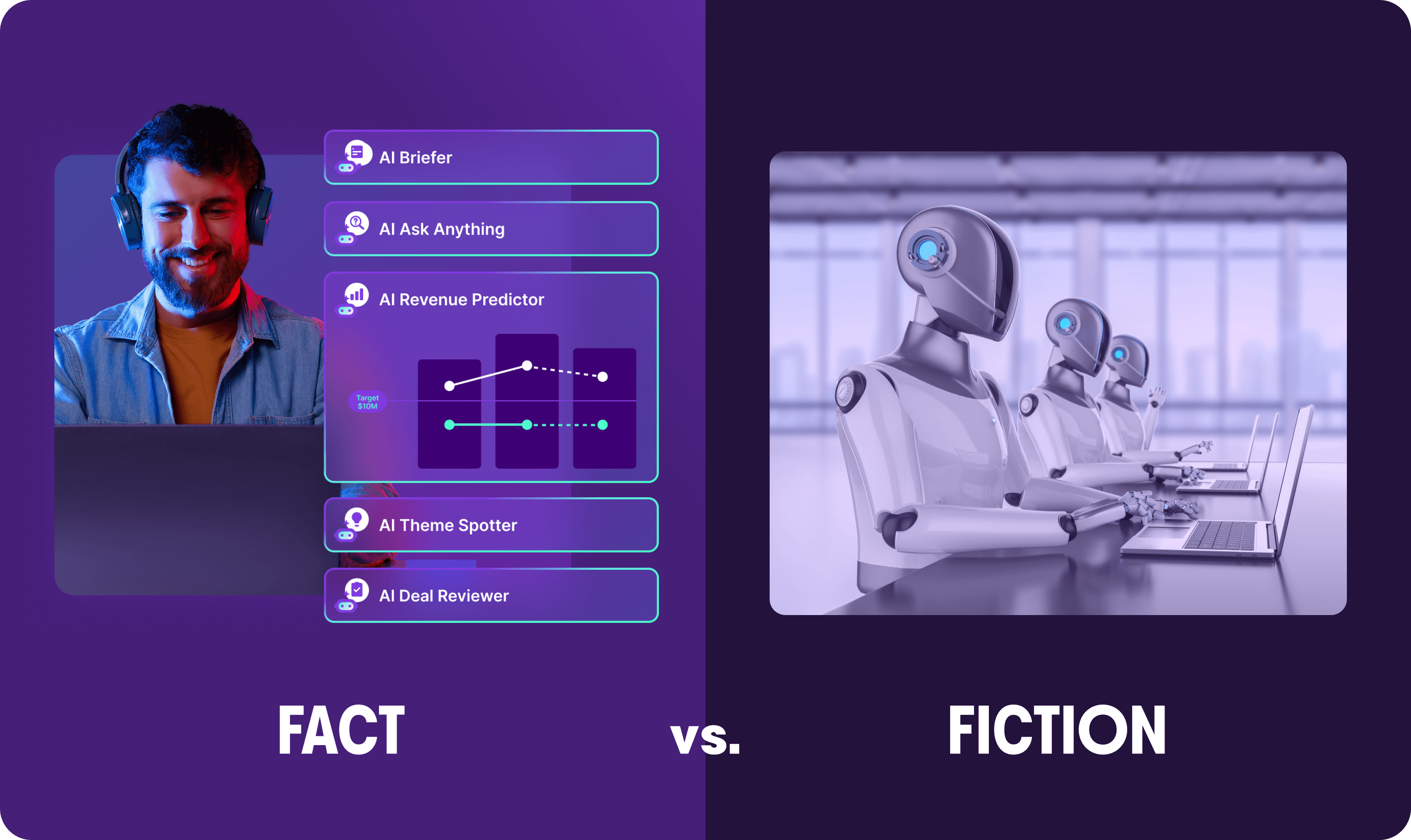Post-sales
The top 10 customer success tools (and how to choose one)

Christine Dzou
Director, Growth Marketing
Published on: July 5, 2023
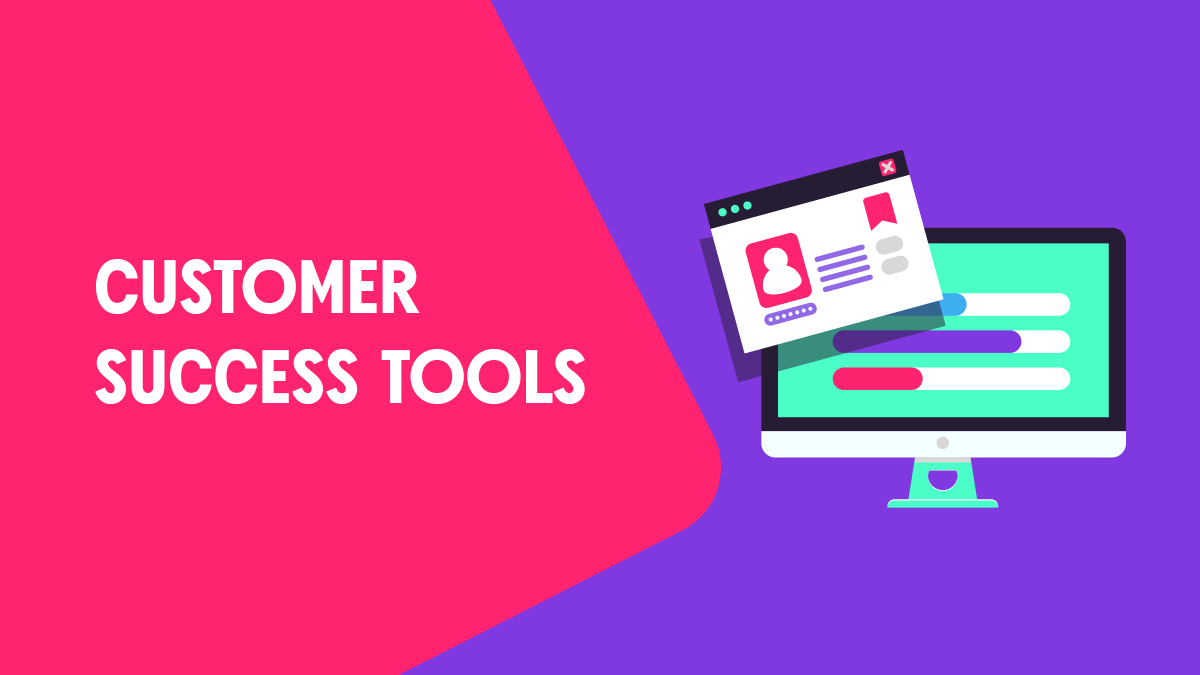
Many businesses are losing valuable customers, not because their product isn’t effective, but because their sales and customer success processes aren’t effective.
Instead of begging marketing for an endless avalanche of leads, more and more companies are using technology to better understand and improve the customer experience. That’s where customer success tools come in.
The right customer success tool can help you understand the buying cycle, identify dropoff points and blockers, and learn what customer behavior leads to loyal business.
Read on to learn what customer success tools are and why they’re so important for acquiring and retaining customers. Then we’ll cover ten of the top customer success tools on the market and how to choose the right one(s) for you.
JUMP TO EACH SECTION TO LEARN MORE:
- What are customer success tools?
- Why do you need customer success tools?
- Top 10 customer success tools
- How to choose customer success software
- Invest in customer success (and your own)
What are customer success tools?
Customer success tools are products that help you document, analyze, and improve the customer experience, from onboarding to renewal.
While some customer success tools specialize in different areas (onboarding, retention, etc.), they generally allow you to track the interactions a buyer has with your team, your product, and even your content. This data allows you to assess customer health and can help identify those falling through the cracks. Customer success tools can help you manage support requests and track your pipeline and upcoming renewals.
What is CSM?
CSM stands for customer success management or customer success manager. “CSM software” and “CSM tools” are other common terms for customer success tools. They collect and analyze customer data to help you satisfy and keep more customers.
Modern CSM tools integrate with your other technologies and make it easy to data between them. For example, Gong connects with your calendar, email provider, and web conferencing platform to give you a detailed picture of each customer experience.
CSM vs CRM vs CMS
When it comes to software and technology, there are tons of acronyms. Here’s a quick rundown on the differences between CSM, CRM, and CMS.
- CSM stands for customer success management.
- CRM stands for customer relationship management. These tools are meant to track contacts and their data, but they usually place more emphasis on the sales process and business relationships.
- CMS stands for content management system. This is a platform that helps you manage and publish content.
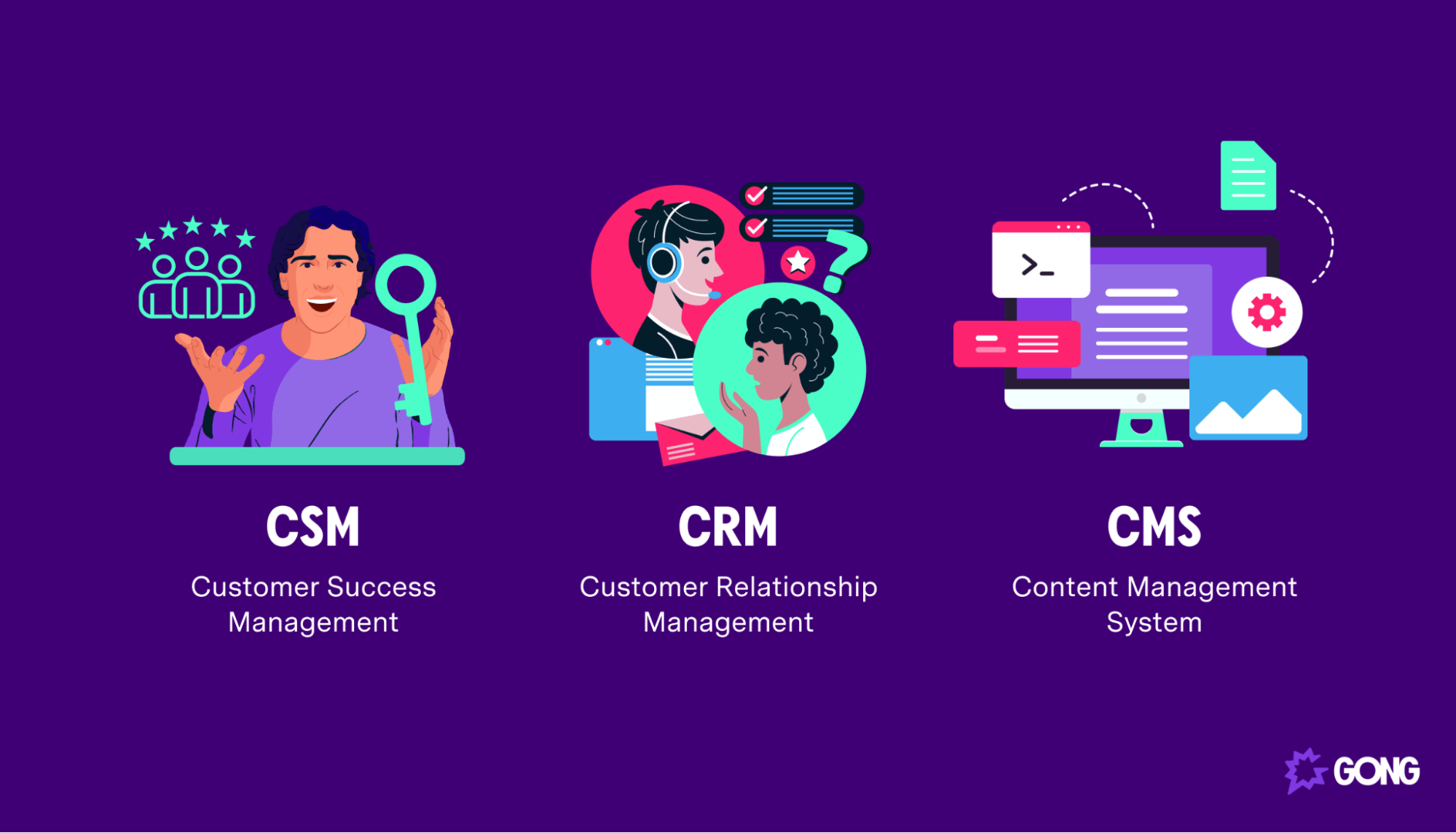
Why do you need customer success tools?
There are endless tools and technologies that claim to make your business more successful, but is customer success software really necessary?
It is if you want to improve customer experience, reduce churn rate , and create an all-star CS team.
Customer success technology keeps all account information in one place and makes it easily accessible. This boosts customer satisfaction by creating a more consistent and personalized experience.
Let’s say a buyer contacts support. With the right customer success tool, your rep can pull up their information and know at a glance how long they’ve been a customer, how often they contact support, and whether they’re at risk of churning .
Customer success tools also give you valuable data for evaluating your sales pipeline and understanding the factors that correlate to retention.
One benefit you might not expect is that customer success tools can help coach your customer success managers. For example, after using Gong’s searchable library of customer communications to train and coach new account managers, Appen reduced the ramp time of new CSMs by four months.
The right customer success tool can be an absolute game-changer.
Top 10 customer success tools
Here are 10 of the top customer success tools and what they have to offer.
1. Gong
Gong is a customer success tool that records and analyzes customer-facing calls. It offers data-driven insights into your sales pipeline and your market, and coaches your customer success team.
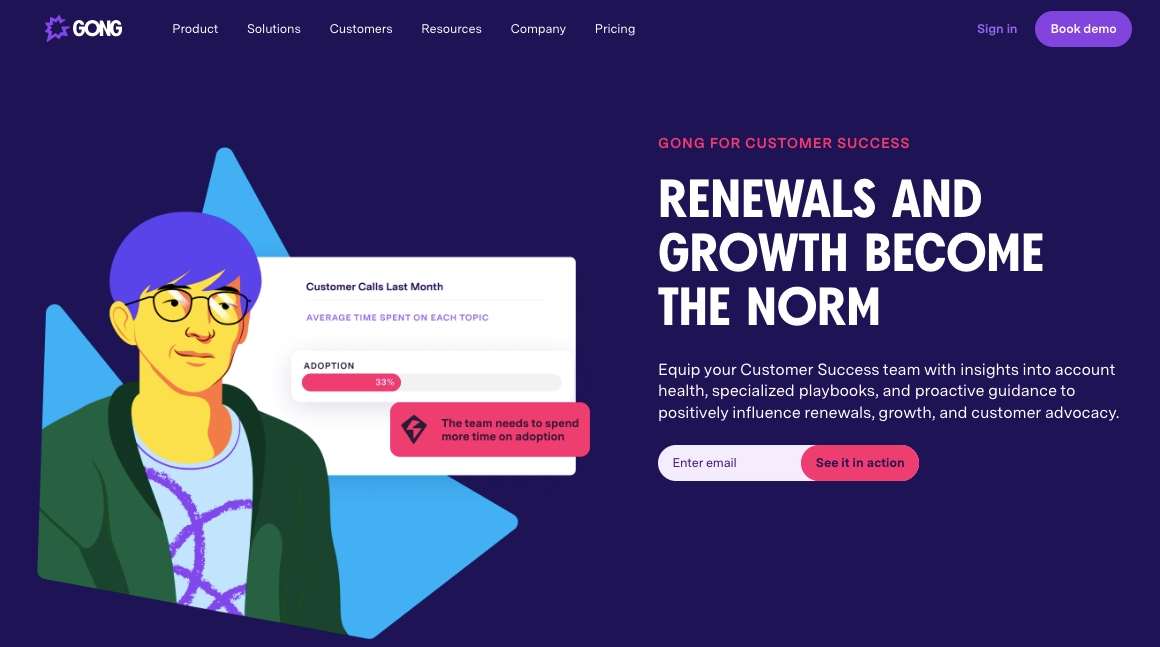
Key features
- Call recording: Gong connects with your calendar to automatically record , transcribe, and analyze your calls. It works with phone calls, autodialers, and web conferencing tools. You’ll build a library of calls to study and learn from.
- Personalized coaching:Your customer success program is only as good as your customer success team. Gong analyzes conversations with buyers and data about account renewal to give suggestions for next steps.
- Smart Trackers:Smart Trackers use artificial intelligence to track key concepts in your customer conversations. They help teams identify at-risk accounts and give you a more realistic view of your pipeline.
Gong is best for any business seeking perfect call records and notes, custom coaching tips to train and ramp reps , and unprecedented AI-powered insight into your market.
2. Gainsight
Gainsight is a customer success platform that combines data from multiple sources to predict risk, operationalize expansion, and understand customer feedback.
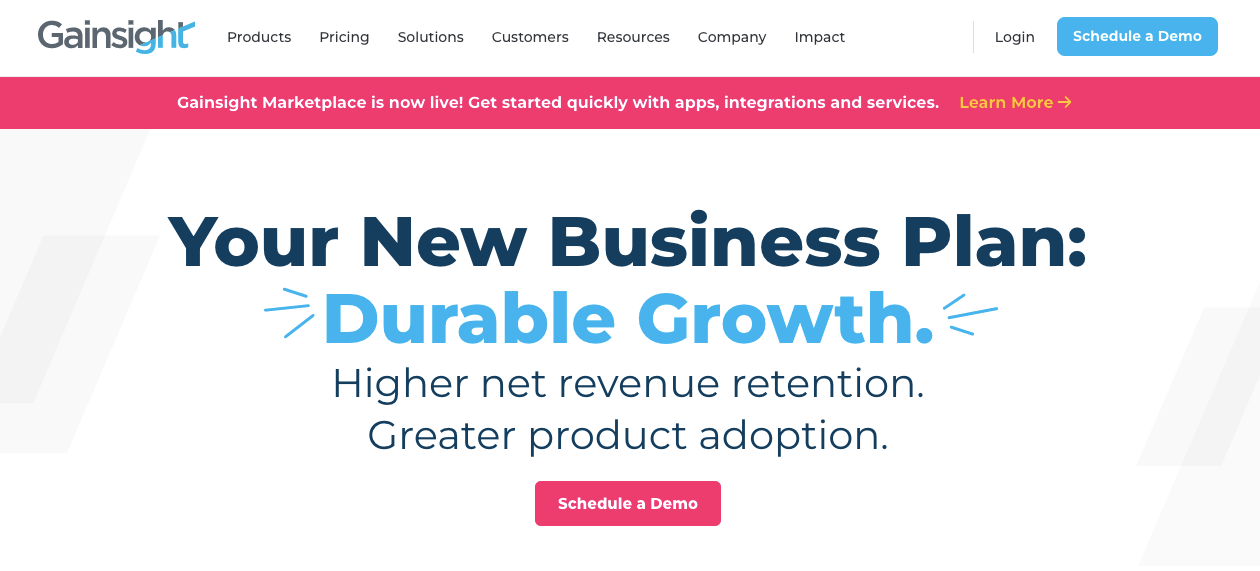
( Image Source )
Key features
- Data aggregation and transformation:Gainsight touts its ability to combine different types of customer data from different sources. It then uses data transformation and next-gen analytics to deliver meaningful customer insights.
- Prescriptive Playbooks:Gainsight’s Playbooks allow you to create and update standard operating procedures for your customer success team. You can even choose whether a playbook applies to all accounts or a specific company or customer relationship.
- Scorecards:To proactively serve and retain buyers, you need to know when there’s an issue. With Scorecards, you choose what metrics to factor in and create rules to alert you of high-risk accounts.
Gainsight is best for mid-market businesses looking to make sense of tons of data. It’s most popular among software and IT companies.
3. Custify
Designed for software-as-a-service (SaaS) businesses, Custify is a customer success tool that helps you track product usage and monitor customer health.

( Image Source )
Key features
- Automated workflows:Custify’s workflows help you automate many of the simple, but important, tasks of engaging customers — send onboarding emails, assign accounts to team members, and more.
- Customer and portfolio health scores:Access health scores for both individual accounts and your whole pipeline. Reps can also rate customer interactions to make sure you don’t miss any signs of customer churn.
- Usage and expansion:Custify’s platform tracks license usage and alerts you when there’s an upsell opportunity. You can also track trial-to-paid conversion rates.
Custify is best for small businesses in the SaaS market. Customers praise the customer success platform’s ease-of-use.
4. SmartKarrot
SmartKarrot bills itself as an intelligent growth platform, helping you track and manage accounts, from onboarding to brand advocacy.

( Image Source )
Key features
- Customizable dashboards:Use a personalized collection of widgets to track the metrics and indicators that matter to your team. You can also set alerts and manage tasks in your dashboard.
- Augmented Intelligence:SmartKarrot’sAugmented Intelligence blends AI with automation to simplify decisions, free up rep time, and automate account management tasks.
- Success Plays:Standardize and operationalize your CS team’s best practices with step-by-step playbooks. Create rules to trigger automated tasks and alerts for your team.
SmartKarrot is best for mid-sized and small businesses that want to have control over what they see and implement standardized and automated practices.
5. UserGuiding
UserGuiding is a user onboarding and help tool, enabling businesses to create self-serve resources to guide buyers and maximize adoption and usage.
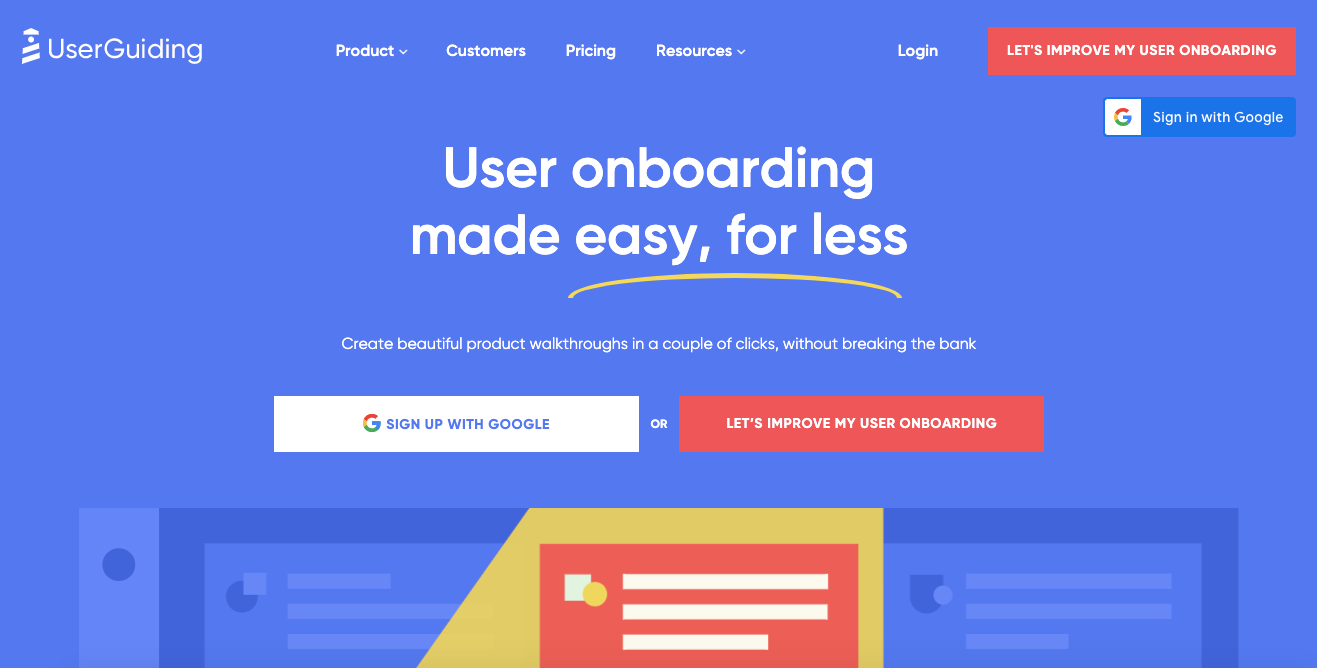
( Image Source )
Key features
- Product Tours:Build step-by-step product tours that guide your users through setting up and using their account. You can highlight your key features and show users how to get started.
- Onboarding Checklists:Create a standard and scalable customer onboarding experience that shows users what they’ll learn (without overwhelming them).
- Resource Centers:UserGuiding’s Resource Centers give you a central location for all your guides, FAQs, and product tours, and you can use a widget to have your resources appear in your own product.
UserGuiding is best for small businesses that want to create a robust collection of user guides and resources, without having to code. It’s better for building general help content than providing any account-specific support.
6. Zendesk
Zendesk is a customer service solution that allows businesses to provide a mix of conversational support and self-serve resources.
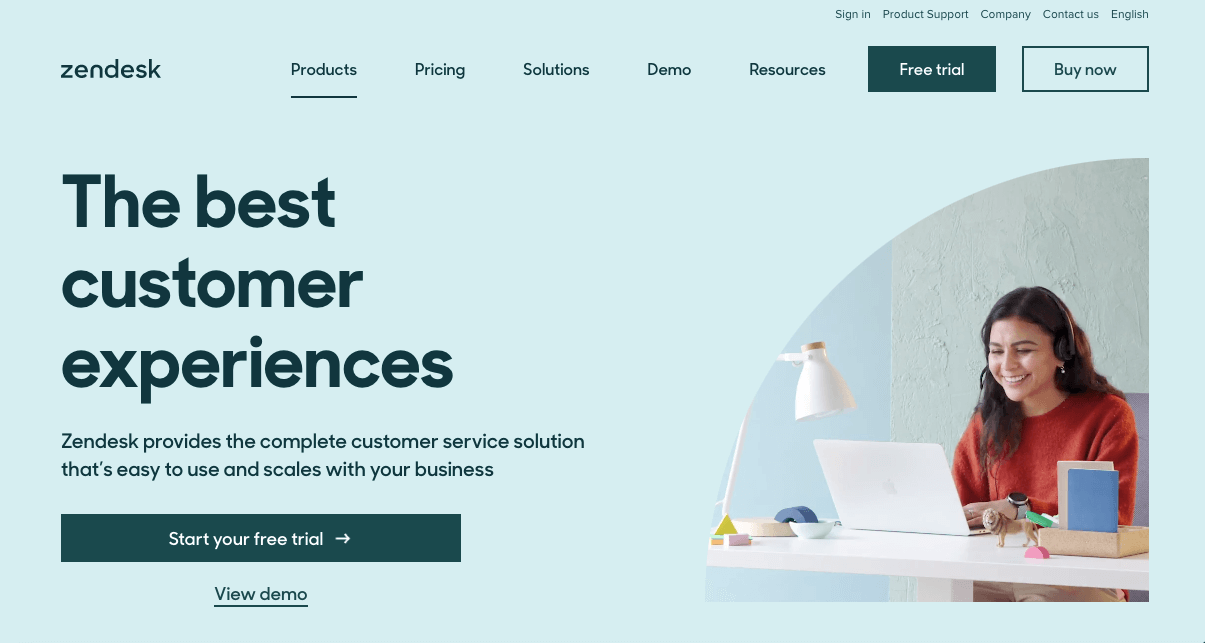
( Image Source )
Key features
- Web and mobile messaging:Zendesk allows you to add live chat to your website for quick and easy customer engagement. You can also add messaging to WhatsApp, Facebook, and Slack.
- Agent Workspace:Your CS reps get a designated workspace where their tools, data, and customer conversations are all in one place. From there, you can pull up a customer profile to see a timeline of their support interactions.
- Bots and AI Assistance:AI within Zendesk will identify and show reps relevant insights and you can build your own chatbots, no coding required.
Zendesk is most popular among small and mid-sized businesses that need to provide a mix of personalized and generalized customer support.
7. ChurnZero
ChurnZero is a customer success platform that helps CS teams better understand their buyers so they can provide a better user experience for individual accounts and their audience.
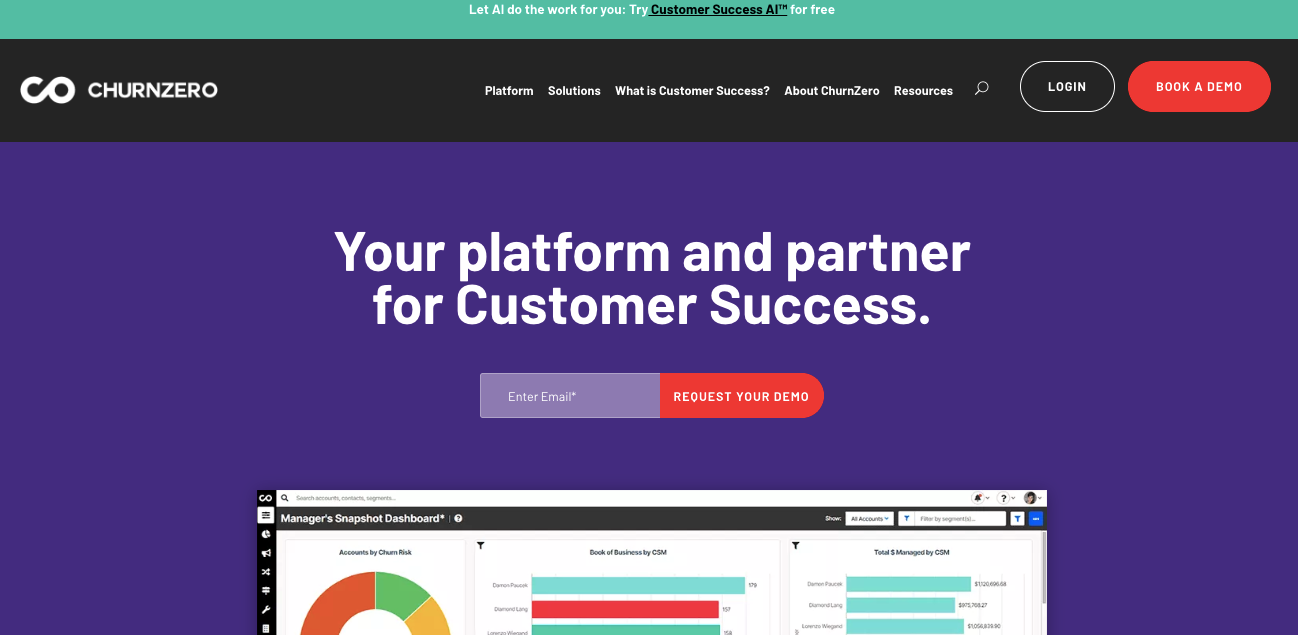
( Image Source )
Key features
- Collaboration Chatbots:If your CS team spends all day in Slack or Microsoft Teams, you can quickly look up buyers information without leaving the messaging app.
- Walkthroughs:Create product walk-throughs that introduce your product to new buyers and explain how certain features work.
- Success Centers:Using widgets, you can create a Success Center that has all the latest information and tips for your customers. You can include announcements, to-do lists, and more.
ChurnZero is popular among technology and IT companies, especially those in the mid-market category. It’s a well-rounded tool for building customer communities and collaboration.
8. Planhat
Planhat is a customer data platform that combines information from different sources. Two-way synchronization allows Planhat to data with other applications as well.
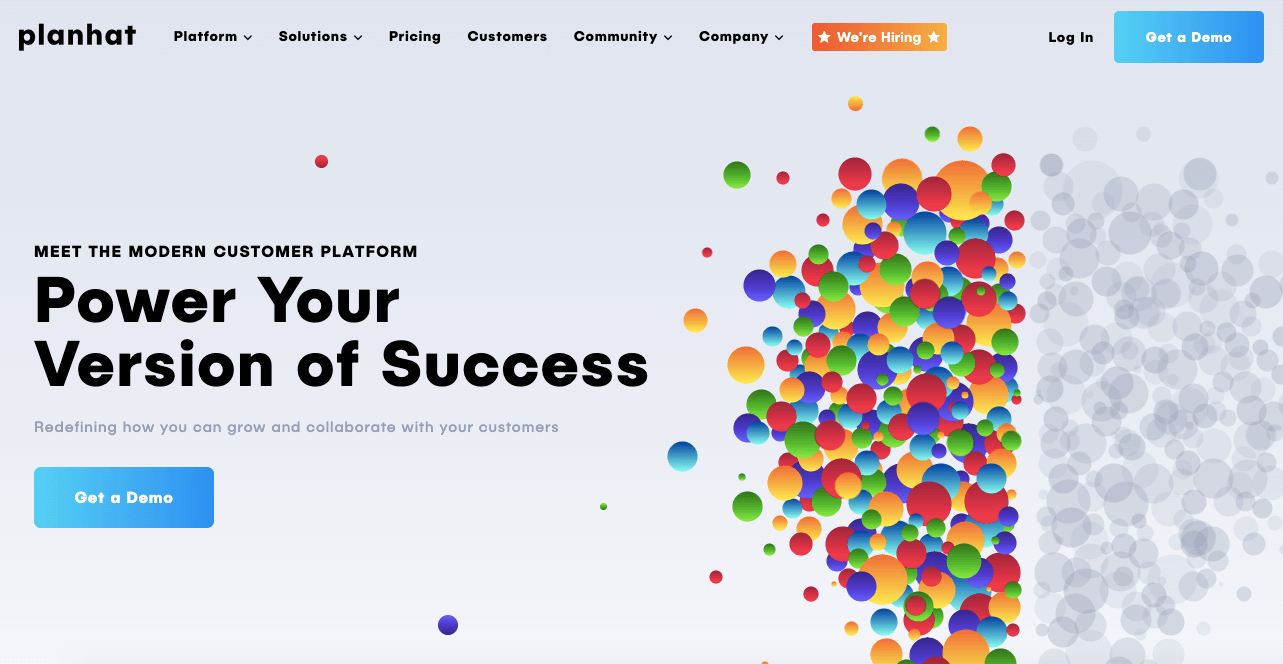
( Image Source )
Key features
- Opportunities pipeline tool:Opportunities is Planhat’s pipeline management tool, and it helps you track and forecast revenue.
- Automations:Planhat offers pre-built automations that automates repetitive tasks. You can also build your own no-code automation workflows.
- Customer Portals:Customer Portals are collaborative workspaces where you can playbooks with customers, create custom metrics trackers, and drive adoption.
Planhat users praise its ease of setup and intuitive platform. Small to mid-sized businesses like that they can build custom elements without having to code.
9. HubSpot Service Hub
Best known for their customer relationship management (CRM) system, HubSpot’s Service Hub is an extension of the CRM to strengthen relationships and manage help requests.

( Image Source )
Key features
- Help Desk and Ticketing:All your customer tickets are organized by status in a single dashboard. Routing and automation boost efficiency, and it’s easy to track response times and other key metrics.
- Mobile Inbox:You can access tickets and conversations on the go in the Mobile Inbox. You can tag colleagues, insert help article snippets, and edit tickets from your phone.
- Service analytics tool:HubSpot Service Hub comes with out-of-the-box reports on productivity, customer satisfaction (CSAT), and pipeline.
HubSpot Service Hub is best for businesses that already use the HubSpot CRM. Buyers appreciate how organized the ticketing system is, but note that the Knowledge Base software can be difficult to work with.
10. Totango
Totango offers a variety of customer success tools that cover CS goal-tracking, customer journeys, cross-functional alignment, and more.
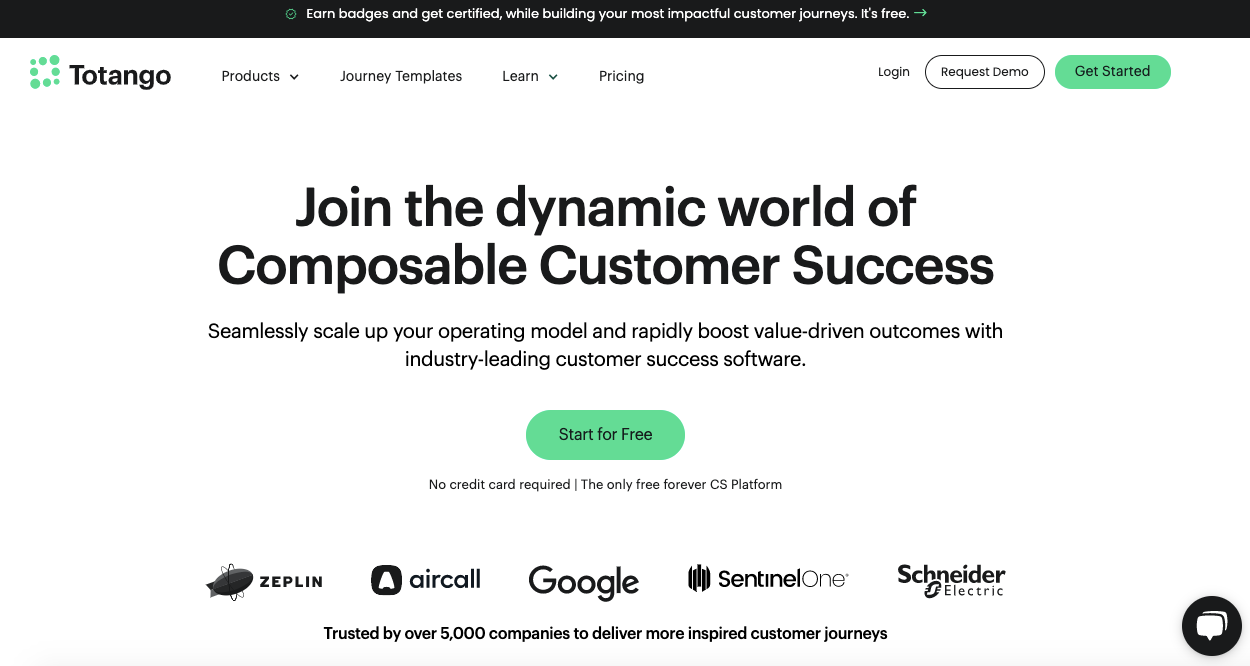
( Image Source )
Key features
- Customer journey templates:To help you understand and optimize the product experience, Totango has 20+ pre-built templates to nurture buyers, drive product adoption, maximize upsells, and more.
- Spark:Spark is Totango’s data platform to monitor customer health, usage, and status. It also has toolkits of communications templates and best practices to experiment with.
- Zoe:Totango’s Zoe is a tool to bring customer success practices and visibility to your entire company. You can even embed customer success insights into Slack and Salesforce.
Totango works with businesses of all sizes and the tools available make them usable in different contexts. Buyers praise their ability to centralize user data, but also note that the software can be slow.
How to choose customer success software
To choose the right customer success software, you have to assess your business needs and which tools will support your areas for improvement.
It’s also important to consider that some CSM tools are suited to certain kinds of businesses. The SaaS industry tends to have a longer sales cycle , making customer acquisition an expensive process. A SaaS company needs a customer success tool that allows them to learn from each account and coaches reps to win more deals faster.
Like any technology, a customer success tool’s integrability is also a big part of the conversation. You need to consider how this software will work with your existing tech stack. Look for pre-built integrations with your most important tools, like Google Workspace , Office 365 , Zoom , and Webex .
Invest in customer success (and your own)
Delivering a great customer experience is a complex challenge for any business. The right customer success tools give you actionable insights and help you delight and retain your buyers.
We’ve covered some of the best customer success tools on the market, but the choice is yours. Your business can’t succeed without an effective customer success program.
Book a demo to see how Gong empowers your sales and customer success teams.

Director, Growth Marketing
Christine Dzou is Director of Growth Marketing at Gong, specializing in web strategy, conversion optimization, and SEO.
With prior leadership roles at Meta and Verkada, she blends data-driven experimentation with scalable growth frameworks to craft high-performing digital experiences that drive demand, engagement, and measurable revenue impact.
Discover more from Gong
Check out the latest product information, executive insights, and selling tips and tricks, all on the Gong blog.



